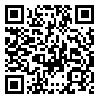1. Martinez Gomez H, Rey Sanabria E, Marquette C. The mother kangaroo program. Int Child Health. 1992;3:55-67.
2. Ellett MLC, Bleah DA, Parris S. Feasibility of using kangaroo (skin-to-skin) care with colicky infants. Gastroenterology Nursing. 2004;27(1):9-15. [
DOI:10.1097/00001610-200401000-00003] [
PMID]
3. Ladington S, Kigulent S. Kangaroo care. Translators: Kadivar m, Nourbakhsh sh,Tehran: vista, 2008, 12
4. Eichel P. Kangaroo care: expanding our practice to critically ill neonates. Newborn Infant Nurs Rev. 2001;1(4):224-8. [
DOI:10.1053/nbin.2001.28101]
5. Wallin L, Rudberg A, Gunningberg L. Staff experiences in implementing guidelines for Kangaroo Mother Care--a qualitative study. Int J Nurs Stud. 2005; 42(1):61-73. [
DOI:10.1016/j.ijnurstu.2004.05.016] [
PMID]
6. Clifford TJ, Campbell MK, Speechley KN, Gorodzinsky F. Infant colic: empirical evidence of the absence of an association with source of early infant nutrition. Arch Pediatr Adolesc Medicine. 2002;156(11):1123-8. [
DOI:10.1001/archpedi.156.11.1123]
7. WHO. Kangaroo mother care to reduce morbidity and mortality and improve growth in low-birth-weight infants .available from: http://www.who.int/elena/titles/kangaroo_care_infants/en. access at 2014.
8. Ramanathan K, Paul V, Deorari A, Taneja U, George G. Kangaroo Mother Care in very low birth weight infants. Indian J Pediatr. 2001;68(11):1019-23. [
DOI:10.1007/BF02722345] [
PMID]
9. Feldman R, Eidelman AI, Sirota L, Weller A. Comparison of skin-to-skin (kangaroo) and traditional care: parenting outcomes and preterm infant development. Pediatrics. 2002;110(1):16-26. [
DOI:10.1542/peds.110.1.16] [
PMID]
10. Anderson GC, Marks EA, Wahlberg V. Kangaroo care for premature infants. Am J Nurs. 1986;86(7):807-10.
https://doi.org/10.1097/00000446-198607000-00016 [
DOI:10.2307/3425389] [
PMID]
11. Legault M, Goulet C. Comparison of kangaroo and traditional methods of removing preterm infants from incubators. J Obstet Gynecol Neonatal Nurs. 1995;24(6):501-6. [
DOI:10.1111/j.1552-6909.1995.tb02387.x] [
PMID]
12. Charpak N, Ruiz-Peláez JG, Charpak Y. Rey-Martinez Kangaroo Mother Program: an alternative way of caring for low birth weight infants? One year mortality in a two cohort study. Pediatrics. 1994;94(6):804-10. [
PMID]
13. Ludington-Hoe S, Thompson C, Swinth J, Hadeed A, Anderson G. Kangaroo care: research results, and practice implications and guidelines. Neonatal Netw. 1994;13(1):19-27. [
PMID]
14. Bergman N, Linley L, Fawcus S. Randomized controlled trial of skin‐to‐skin contact from birth versus conventional incubator for physiological stabilization in 1200‐to 2199‐gram newborns. Acta Paediatrica. 2004;93(6):779-85. [
DOI:10.1111/j.1651-2227.2004.tb03018.x] [
PMID]
15. Keshavarz M, Haghighi N. [Effects of kangaroo contact on some physiological parameters in term neonates and pain score in mothers with cesarean section]. koomesh. 2010;11(2): 91-9.
16. Saeidi R, Asna Ashari Z, Amirnejad M, Esmaeili H. [The Effect Of Kangaroo Care Method On The Pain Intensity Of Vaccination In Newborns]. Quarterly Journal of Sabzevar University of Medical Sciences 2007; 13(4):172-7.
17. Nirmala P, Rekha S, Washington M. Kangaroo mother care: effect and perception of mothers and health personnel. J Neonatal Nurs. 2006;12(5):177-84. [
DOI:10.1016/j.jnn.2006.07.008]
18. Valizadeh L, Ajoodaniyan N, Namnabati M, Zamanzadeh V. [Nurses' viewpoint about the impact of Kangaroo Mother Care on the mother–infant attachment]. J Neonatal Nurs. 2013;19(1):38-43. [
DOI:10.1016/j.jnn.2012.05.004]
19. Messmer PR, Rodriguez S, Adams J, Wells-Gentry J, Washburn K, Zabaleta I, et al. Effect of kangaroo care on sleep time for neonates. Pediat Nurs. 1996;23(4):408-14.
20. Engler AJ, Ludington-Hoe SM, Cusson RM, Adams R, Bahnsen M, Brumbaugh E, et al. Kangaroo care: national survey of practice, knowledge, barriers, and perceptions. MCN: The American Journal of Maternal/Child Nursing. 2002;27(3):146-53. [
DOI:10.1097/00005721-200205000-00004]
21. Affonso D, Bosque E, Wahlberg V, Brady J. Reconciliation and healing for mothers through skin-to-skin contact provided in an American tertiary level intensive care nursery. Neonatal Netw. 1993;12(3):25-32. [
PMID]
22. Dalal A, Bala D, Chauhan S. A cross-sectional study on knowledge and attitude regarding kangaroo mother care practice among health care providers in Ahmedabad District. Int J Med Sci Public Health.2014;3(3):253-56. [
DOI:10.5455/ijmsph.2013.091220131]
23. Bauer K, Pyper A, Sperling P, Uhrig C, Versmold H. Effects of gestational and postnatal age on body temperature, oxygen consumption, and activity during early skin-to-skin contact between preterm infants of 25-30-week gestation and their mothers. Pediatr Res. 1998;44(2):247-51. [
DOI:10.1203/00006450-199808000-00018] [
PMID]
24. Ludington-Hoe S, Thompson C, Swinth J, Hadeed A, Anderson G. Kangaroo care: research results, and practice implications and guidelines. Neonatal Netw. 1994;13(1):19-27. [
PMID]
25. Sellick K, Chia P, Gan S. The attitudes and practices of neonatal nurses in the use of kangaroo care. Aust J Adv Nurs 2006; 23(4):20-6. [
PMID]






